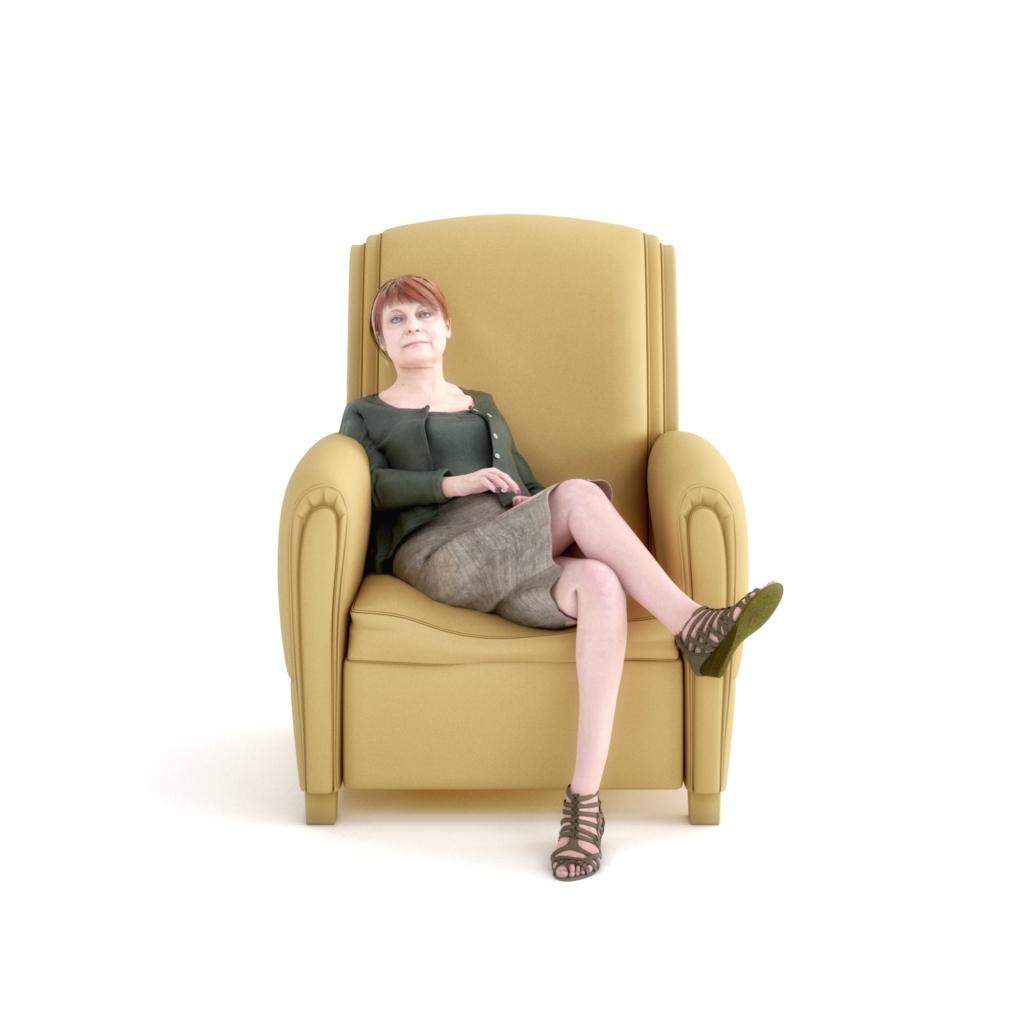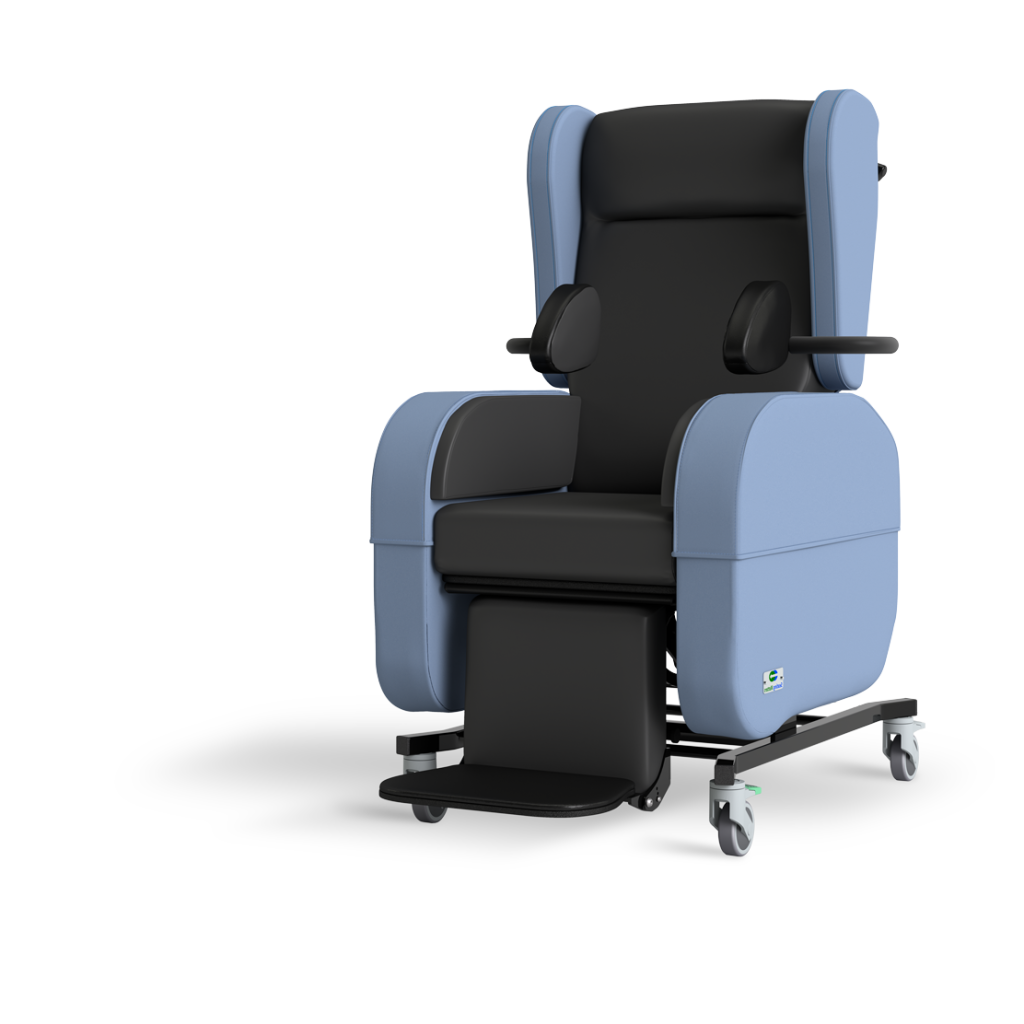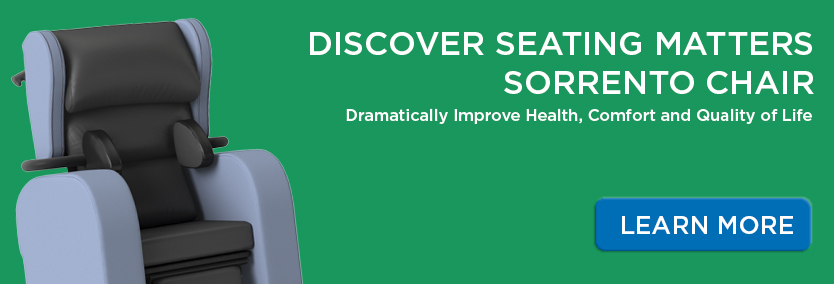Martha, an 84 year old female with a history of Chronic Obstructive Pulmonary Disease (COPD), had rheumatoid arthritis, was a high falls risk and used a stand aid for all transfers. She also had a history pressure ulcers on her sacrum, having delicate skin which would mark or bruise easily.
Martha was a member of the control group during the research project, meaning that she remained in her existing nursing home armchair which had a very wide seat and high arms. The oversized nature of her chair offered little external support and as a result, she often fell or lent to one side for stability. The depth of the seat was also too long, causing her to slide forward caused increased shear on her buttocks and sacrum. Lastly, the chair lacked integral pressure management which Martha was in great need of due to her history of pressure injuries.
Caregivers reported that Martha was in pain and discomfort throughout the 12 week study. They became frustrated because they felt that there was little they could do to improve her position and comfort. Due to the effects of gravity, coupled with her recurrent transient ischemic attacks (TIA’s), Martha would constantly slump forward in her chair, meaning that she needed repositioned every 3-4 hours. This caused her to adopt a posterior pelvic tilt seating position, this position impacted the redness on her sacrum leading caregivers to supply her with an air alternating cushion.
 After the 12 week assessment period and as a result of non specialist seating being prescribed to Martha, she continued to present the same initial postural and pressure challenges as she did at the start of the study. The pelvic obliquity remained, she still sat in a sacral position, she slid forward in her chair, had redness on her sacrum and communicated pain and discomfort.
After the 12 week assessment period and as a result of non specialist seating being prescribed to Martha, she continued to present the same initial postural and pressure challenges as she did at the start of the study. The pelvic obliquity remained, she still sat in a sacral position, she slid forward in her chair, had redness on her sacrum and communicated pain and discomfort.If however, Martha had been placed in the intervention group, we could have helped Martha by providing her with a chair which would have vastly improved her seated position by accommodating her dimensions with an appropriate seat width, depth and height. By accommodating these issues, we would have ensured that her body contact with the seat was maximized and the pressure would have been evenly distributed throughout her weight bearing areas. The use of tilt in space would have also helped to alleviate postural fatigue, which occurred as a result of gravity and would have also helped to redistribute pressure, taking it off the sacrum. Finally, the Seating Matters chair would have been able to provide pressure management, helping to reduce the redness on her skin, increasing Martha’s comfort whilst seated.
Click Here for Martha’s Recommended Seating Matters Chair: Sorrento

** This post was originally published on http://blog.seatingmatters.com/marthas-story

